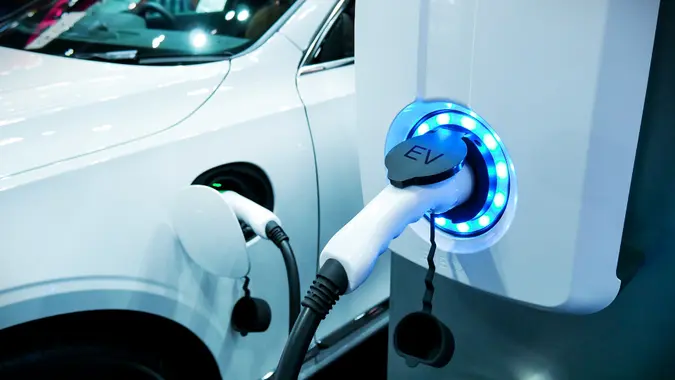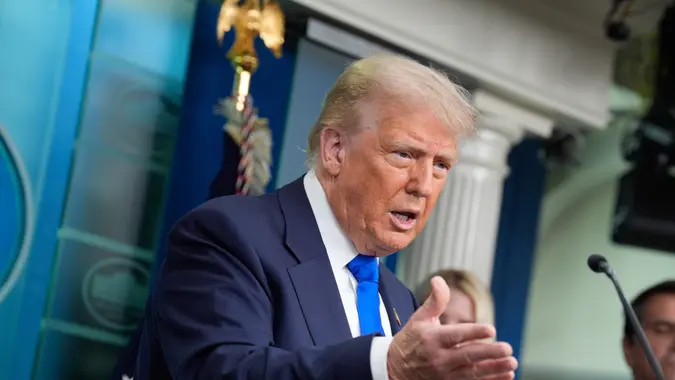Trump Wants To Eliminate Income Taxes: Here’s How That Might Impact the Cost of Gas

Commitment to Our Readers
GOBankingRates' editorial team is committed to bringing you unbiased reviews and information. We use data-driven methodologies to evaluate financial products and services - our reviews and ratings are not influenced by advertisers. You can read more about our editorial guidelines and our products and services review methodology.

20 Years
Helping You Live Richer

Reviewed
by Experts

Trusted by
Millions of Readers
Are you a driver who feels good when you score a deal on gas prices? Amid inflation and rising prices, even a small money win feels pretty good for most consumers. Higher gas prices are among the economic pain points that have come up during the presidential election.
While a lot of voters seem to want to blame the president for higher gas prices, there are a lot of factors that contribute to what you pay at the pump.
You may be wondering how Donald Trump’s eliminating income taxes might impact everyday expenses like the cost of gas. Let’s dig a little deeper and find out!
Impact of Tariffs
Trump has talked about potentially using tariffs to eliminate the federal income tax. A tariff is a tax levied on imported goods — a tax meant to level the playing field for domestic companies.
Here’s something to keep in mind, while you may not pay federal income tax, you’ll likely pay more for things you use every day. Many economists, including those interviewed by Forbes, have said, “Everyday necessities, like clothing, food, and household goods, as well as significant purchases like electronics, vehicles, and equipment, will immediately increase in price.”
Gas Price Factors
To understand how it may affect gas prices, it’s important to know the main components of the prices you pay. According to the U.S. Energy Information Administration, the retail price of gas includes four main components:
- The cost of crude oil: This is the largest component of the retail price.
- Refining costs and profits: You may not realize that refining costs and profits vary by season and by region. Different formulations are needed to reduce air pollution in different parts of the U.S.
- Distribution and marketing costs and profits: This is another way where you live impacts the price you pay, since local market conditions and factors impact distribution and marketing costs.
- Taxes: The final main component is all the taxes that affect the retail price of gas.
Higher Gas Prices
If Trump becomes president again and eliminates income taxes, you’re likely see at least slightly higher prices at the pump. Just like with other goods and services, prices will increase to offset the loss of income tax dollars.
With tariffs, most companies face a higher cost of doing business. While it’s obvious that tariffs would increase the cost of imported goods, they are also almost certain to raise the costs of domestic ones. That’s because the demand would increase, putting a crunch on the supply and leading to higher prices.
In the case of gas costs, you could see how the tariffs and increased costs could affect all the major components of the retail price. You’d likely have higher costs of crude oil, higher refining costs, higher distribution and marketing costs and potentially higher taxes to make up for the lost income taxes.
 Written by
Written by  Edited by
Edited by 

























